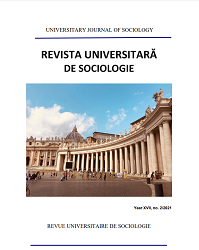INCREASING THE QUALITY OF LIFE IN THE ELDERLY THROUGH HORTICULTURE THERAPY
INCREASING THE QUALITY OF LIFE IN THE ELDERLY THROUGH HORTICULTURE THERAPY
Author(s): George-Cosmin BUTURĂSubject(s): Health and medicine and law, Gerontology, Sociology of Culture, Welfare services, Environmental interactions
Published by: Ediktura Beladi
Keywords: : horticultural therapy; quality of life; the third Age; the elderly; mental illness;
Summary/Abstract: Horticultural therapy can be implemented in an economically, socially and environmentally sustainable way of achieving these goals. Studies on the use of green spaces in mental health care have shown a positive result, with a cumulative association between access and quality of life through the use of green spaces and lower scores on psychological measures of stress (Pope et al, 2015: 33), the major determinants being accessibility green space, with enough green spaces in the neighborhood and theirs for relaxation and recreation. Similarly, van den Berg et al. (2016: 187) showed a positive association in spending time in green spaces and better scores on mental health and vitality scales. Nutsford et al (2013: 49) suggested that green spaces are beneficial for mental health, especially in the case of anxiety and mood disorders, both through the participation of people in activities in green spaces that can be used near the home and in terms of the proportion of usable spaces. green in a neighborhood. Similarly, positive effects on general health were found by Dadvand et al (2016: 112). It is particularly relevant for an inpatient population is a study that identified the benefits of bringing horticultural therapy into patients' spaces in a dementia population (Maller, C. et al, 2005: 64).
Journal: Revista Universitară de Sociologie
- Issue Year: XVII/2021
- Issue No: 2
- Page Range: 372-379
- Page Count: 8
- Language: English

